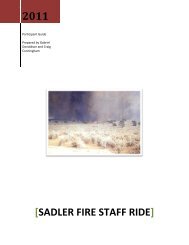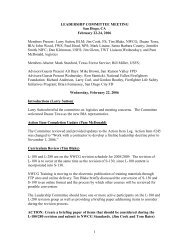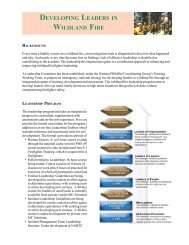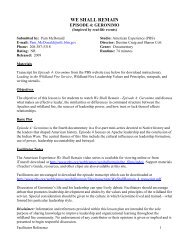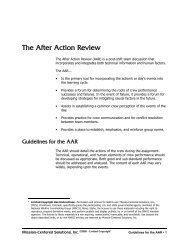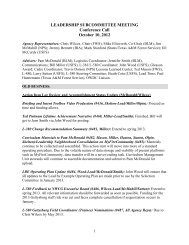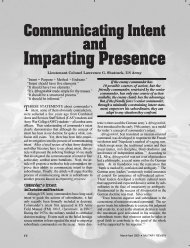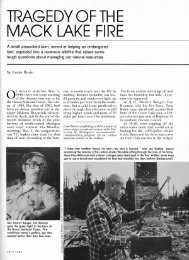example tdgs/stex #2 - Wildland Fire Leadership Development
example tdgs/stex #2 - Wildland Fire Leadership Development
example tdgs/stex #2 - Wildland Fire Leadership Development
Create successful ePaper yourself
Turn your PDF publications into a flip-book with our unique Google optimized e-Paper software.
½ acre in size with some flame showing. After walking about ½ mile from your drop<br />
off point traveling south through a saddle, you and your module are finally able to see<br />
the smoke from the fire. It is below you and to your right. (DESCRIBE: How the<br />
smoke column looks.) The time is 1000. Now what<br />
In a time limit of 5 minutes decide on a course of action and be ready to brief your<br />
crew and take any other actions you feel necessary.<br />
Facilitator “Murphy’s Law” Suggestions:<br />
The “Murphy’s Law” suggestions listed below can be added as “What ifs” at any time<br />
during the scenario to raise the stress level of the leader. You can also use one of your<br />
own.<br />
• The fuels make foot travel difficult or fuels are continuous cured grass<br />
• Time of day is late in the burning period<br />
• Cannot see any sign of the fire during the approach<br />
• Wind shifts or increases<br />
• Other crewmembers voice differing opinions<br />
• The facilitator role plays a concerned dispatcher or FMO demanding feedback<br />
Facilitator’s Notes:<br />
This STEX should focus on the functions of squad/crew level decision making and<br />
communication. In this scenario the player has been presented with mid-season fire<br />
conditions, multiple new fire starts in the area, and direction to keep this fire small.<br />
The player must weigh the unknown fire behavior and approaching a fire from above<br />
against the risk management process. The decision point comes when the player<br />
reaches the saddle and can see the smoke from the fire below the crew’s position.<br />
There is additional pressure on the player from the FMO since he/she has been told to<br />
keep the fire small and that they are on their own for now.<br />
If the player uses the Risk Management Process found in the IRPG they will realize<br />
there are tactical watch outs involved with being above the fire but that these concerns<br />
can be mitigated using items from the <strong>Fire</strong> Orders, LCES, and the Downhill Checklist.<br />
Even if the player doesn’t use the IRPG most will understand that standing in a saddle<br />
above a fire is a precarious situation.<br />
In this TDGS the player’s actual plan (i.e., the exact route of approach) is of less<br />
importance than the reason why he/she is taking that route. Discussion in the AAR<br />
should focus on why the player chose that route and any supporting actions such as<br />
posting a lookout and briefing the squad. Once the “why” has been confirmed the<br />
discussion can move to the “how”<br />
20



